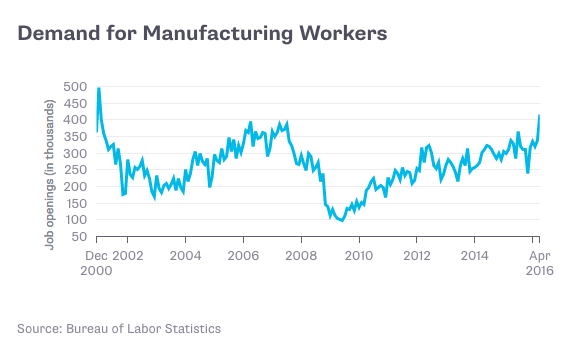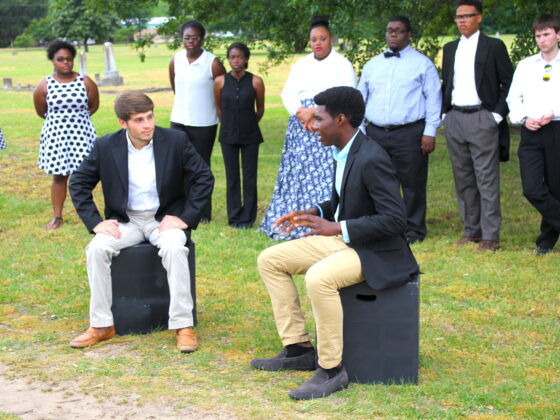An ongoing theme of our reports from “career technical” schools—like this high school in Georgia and this community college in Mississippi and these high schools and tech-training centers in California and South Carolina, and these colleges in Vermont and Maine—is that for people with appropriate training, medium-wage skilled jobs actually exist:
- At this moment in U.S. economic history, the demand for people who can work as high-end repair technicians, in construction trades, in manufacturing factories, in high-end shipping and logistics jobs, and in other fields is relatively strong.
- And at this moment in technical and economic history, the “maker tools” that have democratized the process of hardware innovation are fostering the growth of the new companies that (according to the important Kauffman foundation report, discussed here) account for nearly all the net job creation in the country.
That’s background for an interesting new column by Conor Sen in Bloomberg View. The title is the sobering-sounding “The End of the U.S. Manufacturing Renaissance (such as it was).” But the trends it reports are very different from what you might infer from that headline.
Job openings in manufacturing are at a 15-year high. Layoffs are at a long-term low. Wages are rising faster in manufacturing than in the economy as a whole. The unemployment rate in manufacturing is below the overall average. Please go to the item for the full presentation, but here is one of several representative charts, showing continued recovery after the crash of 2008.

So what’s the problem? According to Sen, the growth in manufacturing employment has slowed because there are not enough people to fill the openings.
That is indeed a problem. But it is a very different kind of problem from what I take to be the general chattering-class view, and overwhelmingly the political view: that not enough Americans have manufacturing jobs, because there just aren’t enough of those jobs.
The economy is indeed finding ways to create demand few new manufacturing jobs, and that demand is pushing wages up. The next step is to prepare more people for them — again, a challenge, but a better kind of challenge than that of flat demand.




